What is a Tisane?
Tisanes are healthy concoctions and infusions of aromatic herbs and plants. Consumed for their therapeutic properties, as well as their rejuvenating aromas, tisanes are delicious infusions. We like to use them in our iced teas as an alternative to sugary soda's or sweetened drinks.
It is our mission at The Tea Cartel to help save one human at a time from unhealthy sugary drinks and sodas that are literally doing bad things to our body on the inside. We want to educate and help people learn about the benefits of what nature has provided to help you live a healthier life.
Disclaimer: Herbs and plants have a complicated chemistry and may not mix well with conventional medicines. We are not doctors and do not provide medical advice. Please see your personal doctor for health advice that's right for you. We offer a range of healthy, organic teas and tisanes that will help keep you hydrated and feeling good. We may share historical information on our website that talks about what different ingredients have been used for and in which way for your own information, this is not relied upon information, but information so you can start your learning journey.
Tisanes are good for you.
Typically a tisane will have at least 2 ingredients, sometimes as many as 10. Filtered Water + Herb(s).
Tisanes are caffeine free when herbs are used. The plant called camellia sinensis is the traditional tea plant and contains caffeine. You will recognise this tea by any of the following names:
- White Tea
- Green Tea
- Black Tea
And all their variants.
Is it a Tea or Tisane?
Contrary to popular belief, not all hot herbal beverages can be categorised as tea. Tisanes are often wrongly referred to as herbal teas, but there is no 'tea', i.e. camellia senensis in it, instead a tisane will consist of parts of plants such as:
- bark
- stems
- roots
- flowers
- seeds
- fruit
- leaves
To make an infusion. Tisanes do not contain caffeine.
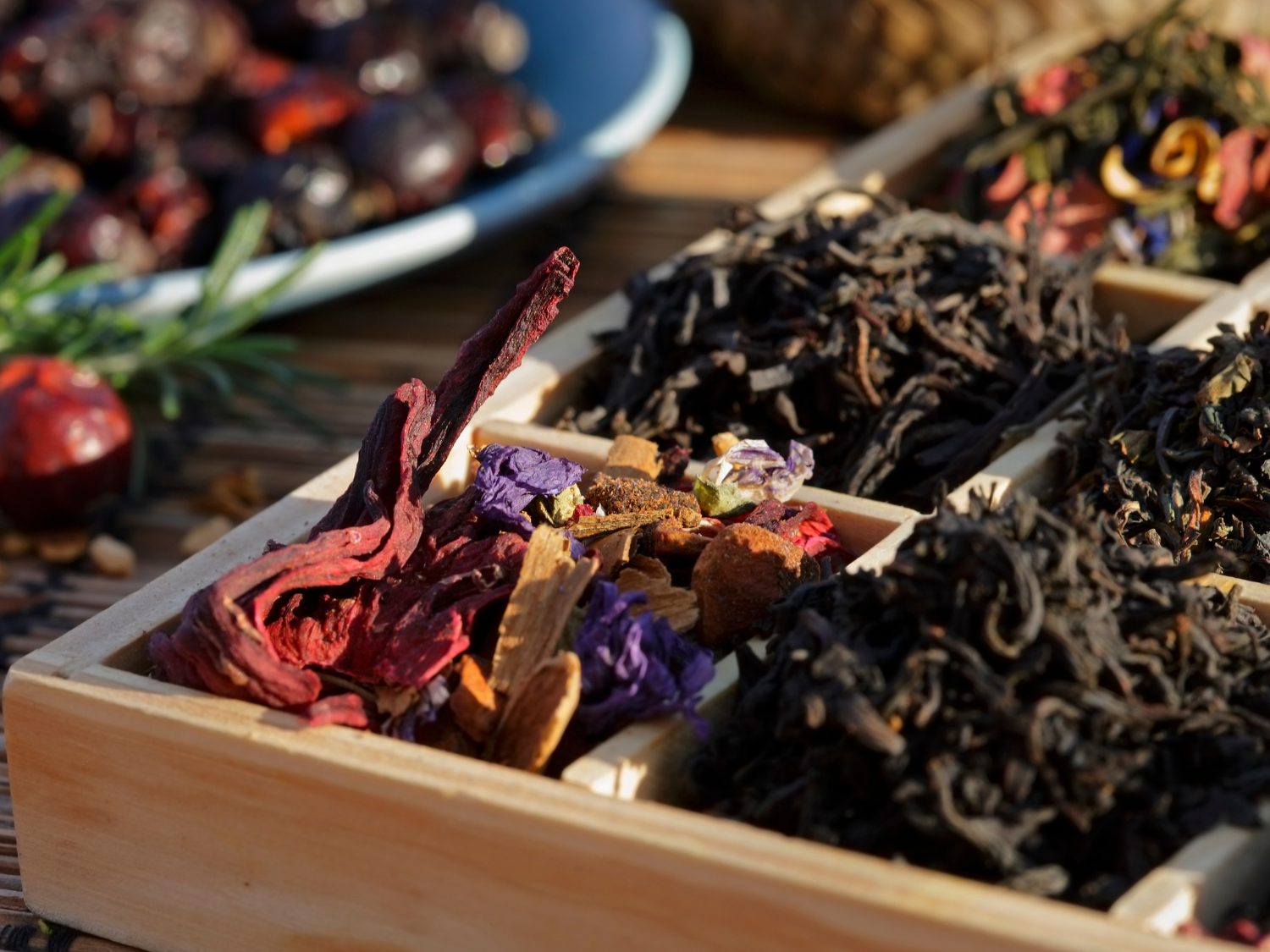
Healing Powers of Tisanes
Historically, for many centuries tisanes have been used in Chinese medicine and ayurvedic medicine to treat the symptoms of various health problems. There has been a growing popularity of tisanes in the western world to help you feel and look better.
- Wellness blends
- Detox blends
- Calm and relax blends
- Sleep blends
- Cold and flu blends
Making Tisanes at Home "Iced Tea"
The Tea Cartel was started to share the joy of tisanes and reduce sugar intake. We love to use tisanes in our iced drinks, it's refreshing and makes you feel good on the inside.
Tisanes are really easy to make. There are two methods for preparation.
- Method 1: Hot Water + Steep (up to 10 minutes)
- Method 2: Cold Water + Steep (2-3 hours)
Hot Brew Tisane
You will get more out of your tisane by using the hot boiling water method as it will draw out the nutrients from the ingredients much faster. The taste will be stronger and longer lasting.
Cold Brew Tisane
However, you may from time to time prefer a softer, more mild drink. In this case try a cold brew. Simply add the herbal mixture to a jar or bottle with filtered water, shake vigorously for 1-2 minutes, then put it in the fridge for 2-3 hours. Strain and serve.
Alternatively you can do this:
- Hot brew, let it cool and drink cold.
- Hot brew concentrated amount then add cold water after it's finished steeping.
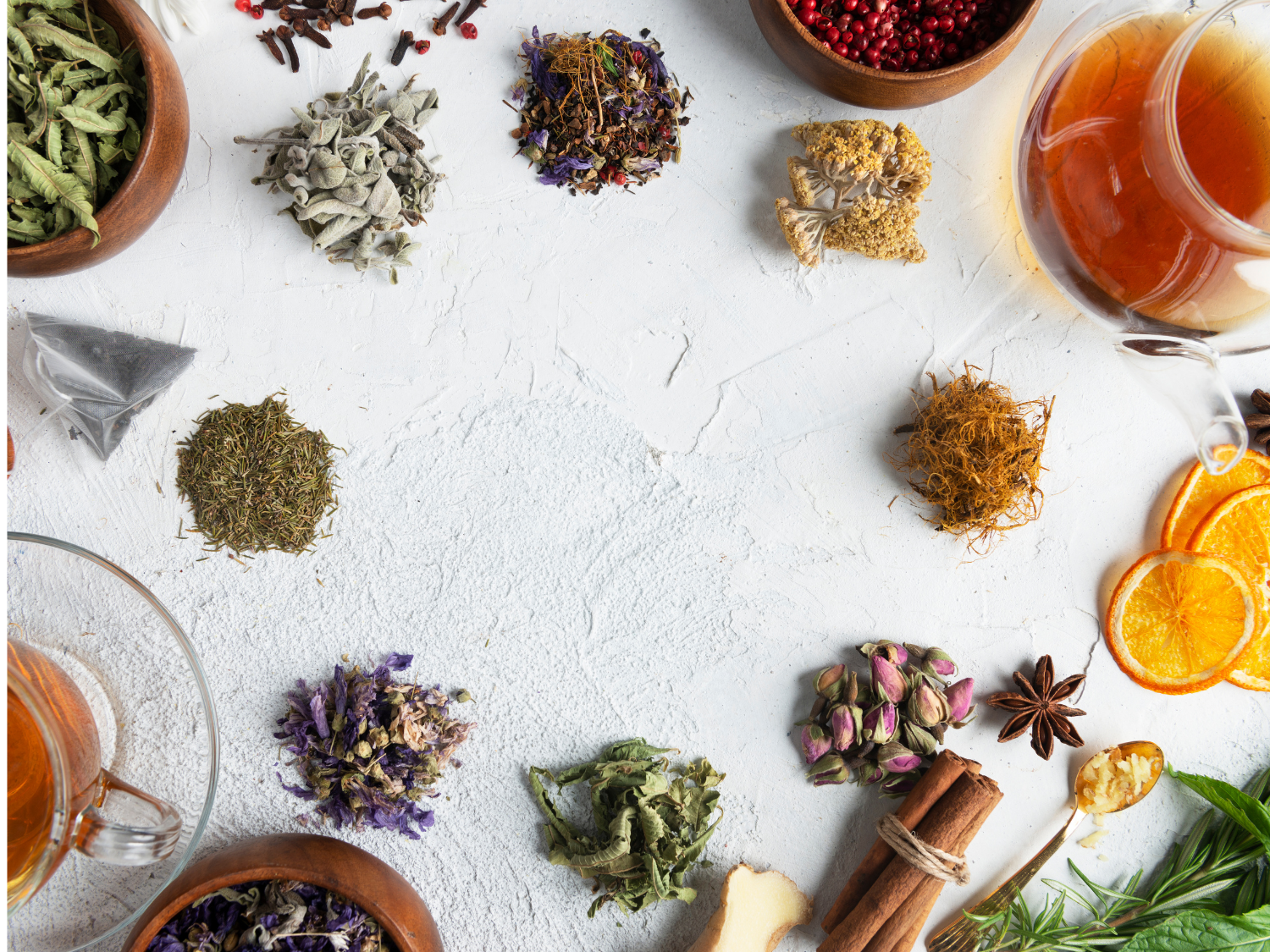
Tisane Ingredients
As mentioned above, tisanes can include any part of the plant, with the exception of the camellia senensis (tea plant). Let's go through a few of the types of ingredients you may see in the packs we make and sell here at the Tea Cartel.
Tisanes - Roots
As the lifeline of a plant, the root draws nutrients from the soil and then carries them to the leaves and flowers. Thick and fibrous in texture, they may contain potent organic compounds that make them an excellent ingredient in tisanes.
About Liquorice Root (glycrrhiza glabra)
This fibrous root imparts a sweetness to a tisane. It may improve respiratory health by soothing inflamed mucous membranes of the throat and lungs, providing relief from colds. It may help with ailments of the stomach and intestine.
Liquorice root is often used as a detoxifier and mood enhancing tonic.
About Burdock Root (arctium)
Part of the same plant that produces burrs, the prickly seed pods that stick to clothing when brushed against, the tap root of the burdock can grow up to 60cm in length. It contains insulin, a compound that may support probiotic health in the colon. Historically burdock root has been used to treat acne and joint pain, is a good diuretic and blood purifying agent. It is often used in detox tisanes as it helps cleanse the liver.
About Chicory (cichorium intybus)
The root of this wild plant, identified by it's pretty blue flowers is often used in tisanes. Similar to burdock root, chicory contains insulin and may help detoxify and strengthen the immune system. It also has a sedative quality and may help with sleep.
About Dandelion Root (taraxacum officinale)
Often considered a invasive weed, dandelion is frequently used in tisanes because of its properties for anti inflammatory and ability to help reduce swelling and pain. This ingredient also may help in aiding digestion and supports good bacteria in the intestines.
About Ginger (zingiber officinale)
We use ginger in a number of our blends because it is easy to drink and extremely good for you. Warm and comforting, ginger is a spice and root that's become a popular ingredient for many tisanes and teas. You can add freshly grated ginger to any of your teas for a refreshing zing.
Ginger is a natural anti inflammatory and may help detoxify the body. Historically, ginger was used to treat digestive ailments, nausea and symptoms of cold and flu. You can make a simple tisane with our wild ginger and lemongrass blend, add a teaspoon of honey for a bit of sweetness and health benefits when you're feeling unwell.
Bark in Tisanes
Like the roots of a tree brimming with nutrients, the bark off a tree is also jam packed with goodness. Barks in tisanes are becoming more popular. They will be added either grounded (think cinnamon) or in small broken pieces. It's important to use a strainer once you've made your tisane and finished steeping it. Most frequently used barks in tisanes include:
About Cinnamon (cinnamomum verum)
Historically used for the antioxident properties to treat colds and flu symptoms and it's antibacterial qualities can assist digestion by reducing gas and stimulating appetite. This spice should be used sparingly in tisanes. There are two types of cinnamon, cassia and ceylon.
Ceylon cinnamon is grown in Sri Lanka and is considered superior.
About Wild Cerry (prunus avium)
Historically wild cherry (also known as choke cherry) has been used for it's soothing effect on coughs and it's actually used in a lot of commercial cough medicines. It has quite a bitter taste and is best used when blended with nicer tasting ingredients. Nutritionally it's a high value ingredient.
About Willow Bark (salix alba)
One of the oldest herbs used to treat pain, willow bark contains salicin which helps to relieve pain when it converts to salicylic acid in the body.
Interesting fact, commercial pharmaceuticals use this ingredient to make aspirin. Willow bark may help with relieving cold and flu symptoms, headache, pain, fever and has anti inflammatory properties.
About Slippery Elm (ulmus fulva)
Slippery elm has been historically used to help relax the tissues in our mouthes and throat. The mucilaginous (viscous) inner bark of the slippery elm has a soothing effect.
Frequently Used Flowers in Tisanes
This is my favourite part of making tisanes for you to enjoy, the blend of special flowers and fruits. Here are the flowers we use most in our blends and planned for future special batches.
Bergamot (citrus bergamia)
There are two types of bergamot. The bergamot flower also referred to as bee balm and the tree a variety of citrus chosen for it's scented white flowers, fruit and aromatic peel. Essential oil is extracted from bergamot and used in teas. The history of bergamot shows it being used in earl grey teas since 1824 to improve the taste of black taste. Since then it's become quite a distinguished beverage and ingredient for the highest quality blends.
Bergamot has a romantic fragrance, is 100% natural in it's pure form when used in tea blends.
Bergamot may assist with digestion and thought to relieve flatulence. The fruit is often used to assist in relief of headaches and calming the body. As a fragrance and ingredient it's loved by many and adds a special finish to teas.
Chamomile (matricaria chamomilla)
Chamomile looks like a little daisy. It will grow just about anywhere and is a beautiful addition to any garden. Chamomile has many beneficial properties when added to teas and tisanes. Historically chamomile was chosen because of it's calming and sedative properties, it's also an immune booster and relaxant.
It has a pleasing pineapple aroma which makes it enjoyable to consume as a beverage in tisanes or teas.
Elderflower (sambucus nigra)
Think of a spray of tiny little creamy white coloured flowers on a long stalk with green leaves under, this is the elderflower. You may recall back in the 1990's Anita Roderick from the Body Shop, made the elderflower famous with her special tincture for cleansing the face and skin. Following this in the UK, elderflower became a fancy ingredient in fresh, icy cold beverages made into a sugary syrup for cordials.
You can now be rest assured that elderflower is used without all the sugars, purely for it's nutritional values and in it's natural state.
These white umbrella shaped flower clusters grow on the elder shrub and bloom during the month of May. They are known for their inflammatory properties. The flowers are used closed and added to create tasty infusions to detox the body and fight colds/flus. It makes a tasty edition to tisanes.
Hibiscus (hibiscus sabdariffa)
"Hibiscus" is our signature tisane and most favourite ingredient of all time. When you open a packet of our hibiscus tea you will instantly fall in love. Many people tell us it takes them back to a place where they had the most wonderful tropical summer holiday.
Hibiscus also called 'roselle' or 'rosella' is a gorgeous tea (oh yes, we already said that). It has so many uses and applications, you're only limited by your imagination.
This particular variety of hibiscus plant has a tall spine *(trunk) with dark green leaves that are edible and bright yellow flowers with a deep magenta/red inner bud. Outside the flower is the calyx, this has a waxy texture and is used for making tisanes and teas.
Uses for hibiscus tea/tisane:
- Iced tea
- Hot tea
- Mocktails and cocktails
- Making jams and syrups
- Making ice cubes for drinks
- Adding to ice cream
- Adding to cakes, muffins, baked delights
- Using in lieu of raspberries
What does hibiscus taste like?
Glad you asked. 😊
It has a sweet tart taste, it's like cranberry and raspberry had a baby. It's an excellent ingredient to make drinks if you're going out to spend the day in the sun, as it's really refreshing and satisfying. It's equally good when you're stuck at home working on the computer.
Some people like to add 1/4 teaspoon of stevia powder (natural plant based sweetener) to their hibiscus tea when it's steeping. You can eat the hibiscus petals, they are delicious. High in vitamin c, studies suggest hibiscus may help high blood pressure and maintain healthy levels of cholesterol.
These little gems are amazing for providing a showy display to guests at your next dinner party.
Lavender (lavandula angustifolia or lavandula officinalis)
Lavendar is known for it's distinct and relaxing aroma. When combined with lemon balm in a hot tisane it may help to relieve headaches.
Lavender historically has been used as a classic remedy for insomnia, fever, anxiety, stress, cold, flu and digestive problems.
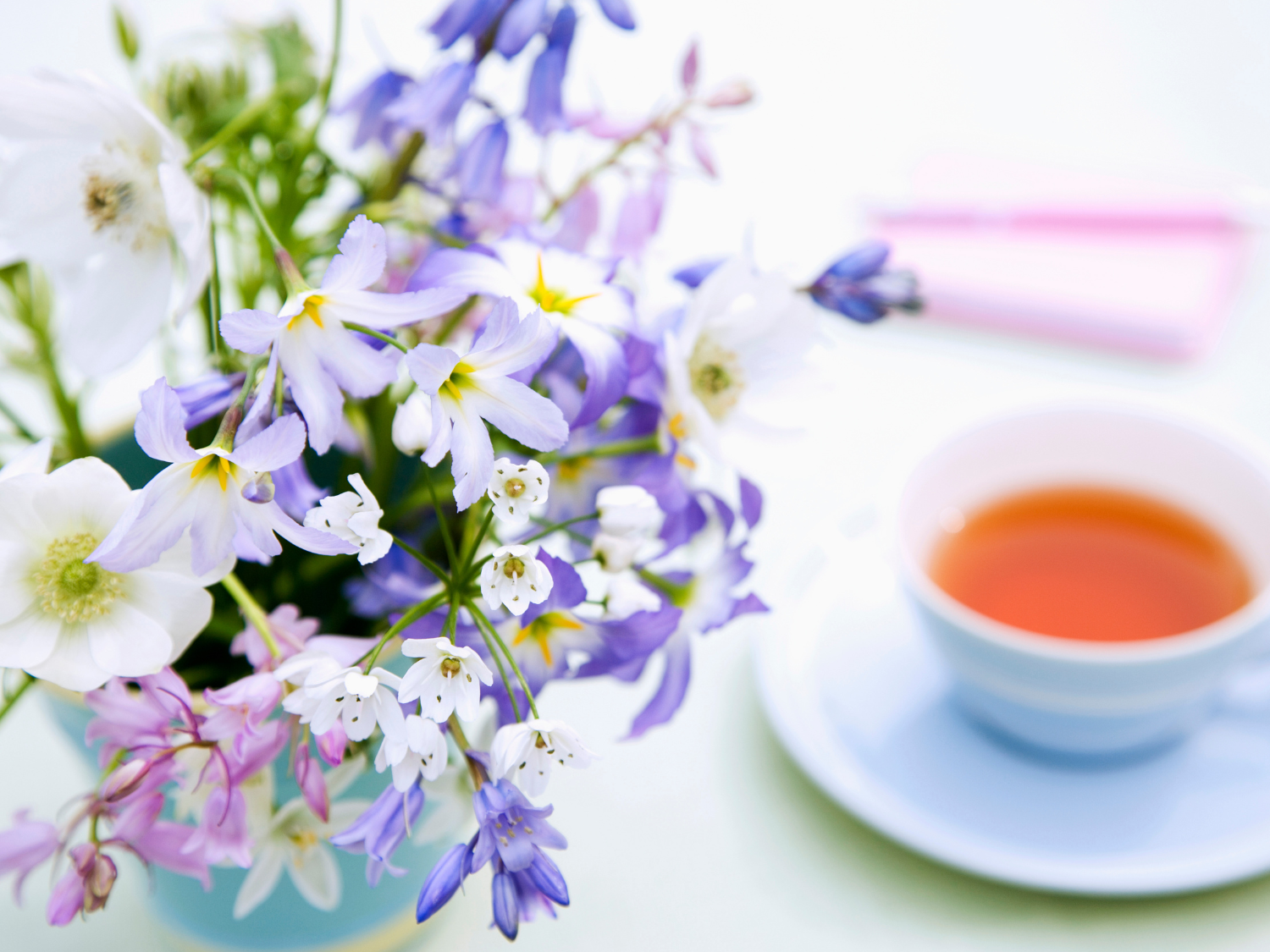
Lime Flower (tila vulgaris) also known as "Linden Flower"
The little lime flower is the blossom of the linden tree, it's also known as linden flower. It contains a natural antihistamine and has been historically used to help treat allergic reactions as it neutralises the problem. It has been used to help treat coughs, cold and flu symptoms. They are fragrant and impart a sweet, floral flavour to tisanes.
Cornflower (centaurea cyanus)
Brilliant, sky blue. That's the colour of the beautiful cornflower. Native to Europe it grows easily in fields with grains such as corn, wheat, barley and rye. Cornflower is an excellent ingredient for tisanes, it's flavour is very mild but it's beneficial properties are valuable. It may relieve constipation, fever, water retention and chest congestion. Cornflower is pretty and brightens up any pot of tisane!
Calendula (calendula officinalis)
Think of magnificent and multiply that by at least 1000%. Calendula flowers. Highly valuable for your tisane. Calendula has many uses:
Flower petals are used for tea. The flowers are used in India and Buddhist religion for celebrations and worship.
These plants are native to Europe but can be grown anywhere in the world. Calendula may help with the following:
- Anti inflammatory
- Relieves muscle spasms
- Astringent
- Heals wounds
- Anti micro bacterial
- Detoxifying
The calendula flowers in teas and tisanes gives a sweet fragrance with a very slight spice and bitterness, but not unpleasant. A little drizzle of honey and calendula tea go together like peas and carrots.
Rose (rosa rubiginosa or rosaceae)
The rose originally comes from the middle East and Iran and has been cultivated there since the beginning of time. There are many types of roses in existence, the ones that are most frequently used in teas are pink rosa damascena. After pollination roses produce rose hips a rose pseudo fruit used for making herbal teas.
Traditionally the pink rose is used in tea and mixed with other herbs or black tea. We have an exciting blend called Persian Breakfast Rose tea which we highly recommend you should try.
Rose tea may help with constipation relief, digestion, menstrual cramping, losing weight, controlling diabetes, pain and anxiety help.
When you choose a tea that has rose, take a look at the other ingredients to understand what the true benefits are. As always, we recommend and only sell teas and tisanes made with 100% organic ingredients.
If you would like to try an indulgent experience, try mixing rose tea and leaving it in your hair, rinsing out for a beautiful soft fragrance.
Blue Butterfly Pea Flower (clitoria ternata)
The blue butterfly pea flower, sometimes called butterfly pea produces a brilliant indigo coloured blossom which is then dried and used for tea. It's full of high quality beneficial elements and has been used in the past as an antioxidants. For putting on a show, both the hibiscus flower and blue butterfly pea flower are both on the catwalk as stars in their own right.
You can do many things with this flower from making delicious iced teas, to hot broths, use the brightly coloured tea for cooking to change the colour of your rice or even pasta! It's a natural food colouring.
Clitoria ternatea, commonly known as Asian pigeonwings, blue bell vine, blue pea, butterfly pea, cordofan pea is a plant species belonging to the Fabaceae family. The flowers of this vine were imagined to have the shape of human female genitals, hence the Latin name of the genus “Clitoria”, from “clitoris”.
In Thailand, a syrupy blue drink is made called nam dok anchan, it is sometimes consumed with a drop of sweet lime juice to increase acidity and turn the juice into pink-purple. In Burmese and Thai cuisines, the flowers are also dipped in batter and fried.
Butterfly pea flower tea is made from the ternatea flowers and dried lemongrass and changes color depending on what is added to the liquid, with lemon juice turning it purple.
The flowers have more recently been used as a botanical in a colour-changing gin. Blue in the bottle, this turns pink when mixed with a carbonated mixer such as tonic water.
Passion Flower (passiflora incarnata)
The passion flower is native to the Southern part of the united states. It has enjoyed a long history of use by Native Americans. Historically it was used for it's calming and soothing properties.
The flower is so pretty. The outer petals are white and rounded in shape, the inner petals are long and narrow with purple on the edge, white in the middle and towards the centre of the plant a deep maroon colour. In the very centre there are stamens in two colours.
When making tea the outer petals are used and dried. Passionflower tea is a special type of tea that comes from the plant being a long, strong, climbing vine with parts that go above the ground.
During the pre-Columbian era, passionflower was used for food and wellness purposes. The Native American tribes, Cherokee people, and European settlers used passionflower as a tea by drying them and letting them steep in boiling water.
When we prepare teas for your enjoyment, the flower is dried and mixed with other herbal, roots, flower ingredients to give you a heart warming blend that will make you feel good.
Passion flower may help with relieving anxiety, insomnia, calming for ADHD, anti inflammatory and general wellness.
Linden Flower (tilia cordata and tilia platyphyllos)
The linden flower bears a light lemon citrus taste but it is not a citrus plant. It has floral hints and is often combined with the dried leaves to make the organic tisane. Most often grown in Poland this plant thrives in colder weather.
The flower is very pretty, the leaf shape is similar to chinese elm. Historically the linden flower tea / tisane were used to help relieve anxiety, indigestion and vomiting.
This tree will grow to 130 feet in height and when in bloom perfumes its whole neighbourhood. The leaves are obliquely heart-shaped, dark green above, paler below, from 2 1\2 to 4 inches long and sharply toothed. The yellowish-white flowers hang from slender stalks in flattened clusters. They have five petals and five sepals. The original five stamens have each developed a cluster, and there is a spoon-shaped false petal opposite each true one.
Linden Tea is much used on the Continent, especially in France, where stocks of dried lime-flowers are kept in most households for making 'Tilleul.'
The honey from the flowers is regarded as the best flavoured and the most valuable in the world. It is used exclusively in medicine and in liqueurs.

Leaves used in Tisanes
Herbs, flowers and leaves - the list is endless and in this blog post, the ultimate guide to tisanes we've included our most loved ingredients. We will continue to add to this list as we offer more teas. We'd like to dive right now into the leaves used in Tisanes. Leaves are beneficial and contain a variety of potent proteins, natural sugars and enzymes which are all released during the preparation process.
If you prepare your teas using boiled hot water you will maximise the benefits from your tea, however it is not necessary to do this if you prefer a colder brew. A colder brew is used when you seek a softer tasting tea and it will take some hours to prepare.
Lemon Verbena (aloysia triphylla)
Also known as vervain, lemon verbena has a potent lemon like fragrance. Oils can be extracted from the lemon verbena. It is a very pretty plant, forms a bush shape and has long elongated sprays with lots of pretty leaves.
You can take a lemon verbena bush, pick a few leaves and rub it between your fingertips to smell the essential oils within the leaves.
Lemon verbena may help to relieve fever, cold symptoms, calm nerves and aid digestion. It's a pleasant tisane and is often combined with other ingredients such as fresh mint or green tea. Note: green tea has caffeine, avoid before bedtime.
Mint
The humble and forever plant, mint.
- Peppermint
- Spearmint
- Chocolate mint
- Common mint
There are so many varieties of mint. Each one has a slightly different flavour and can be brewed hot or cold. Mint as a tisane makes an excellent iced tea. You can also brew the tea, cool it and add to smoothies with fruit like mangoes for a decadent treat.
Mint leaves have been used for hundreds of years to alleviate headaches, aid digestion and hydration. It's refreshing and uplifting.
Lemon Balm (melissa officinalis)
Lemon balm comes from the mint family. It has a lemony aroma and taste. It may help to ease anxiety, restlessness and treat symptoms of cold and flu. We use lemon balm in our sleep tea. Many people use lemon balm to help improve their mood and feel happier.
Lemon balm, also known as Melissa officinalis, is a fragrant herb that has been used for centuries due to its numerous health benefits. One of the most popular ways to enjoy the benefits of lemon balm is by making tea out of its leaves. Lemon balm tea not only provides a refreshing and comforting taste but may also positively impact your overall well-being.
One significant benefit of drinking lemon balm tea is its stress-relieving properties. The herb contains natural compounds that help calm the mind and reduce anxiety levels in individuals who consume it regularly. This makes lemon balm tea an excellent choice for those who need some relaxation after a long day at work or want to unwind before bed. Additionally, studies have found that lemon balm can improve mood and cognitive function, making it an ideal drink for people looking to boost their mental performance.
Raspberry Leaf
Raspberry leaf is widely used by tea makers as a highly concentrated form of potassium. At this time we are not offering teas with raspberry leaf as the current form to which it is made may look visually unappealing. If is something you are interested in, please let us know and we can advise you further.
Tulsi Leaf aka Holy Basil
Used in ayurvedic medicines, holy basil is highly prized in Indian culture. It has a very distinctive taste. At this time we do not currently use Tulsi leaf, but we an provide it on demand. If you are interested, please contact us.
Paw Paw / Papaya Leaf
Paw paw leaf is becoming more popular as an ingredient for herbal teas and tisanes. It may assist with relieving gas or bloating. In Asia, paw paw leaf is used to treat symptoms related to dengue fever. It may help promote balanced blood sugar, support digestive function and have anti inflammatory effects.
In Australia there is a product called Lucas Paw Paw ointment, it is known as a miracle healing ointment for soothing minor burns, sunburn, scalds, dried lips, gravel rash, cuts, wounds, nappy rash and skin irritations. They use pawpaw leaf and fruit to make this.
When you ingest paw paw leaf in your tea you're giving your body a whole lot of goodness.
Scullcap Leaf (scutellaria baicalensis)
Scullcap leaf is a small shrub reaching only 30cm in height, but can grow 50-60cm wide. It has pretty purple flowers. Botanists note this plant is part of the mint family. It has been used in traditional Chinese medicine for more than 2000 years.
In the USA scullcap has been used for more than 200 years as a mild relaxant and as a therapy for anxiety, nervous tension, and convulsions. Studies show American skullcap has significant antioxidant effects, and may help protect against neurological disorders, such as Alzheimer's disease, Parkinson's disease, anxiety, and depression. Source: Mount Sinai
Fruit and Seeds used in Tisanes
The following fruits and seeds are frequently used in tisanes:
- Hibiscus Calyxes
- Blueberries
- Elderberries
- Acai Berries
- Citrus Peel
- Rosehips
- Cardamon
- Fennel
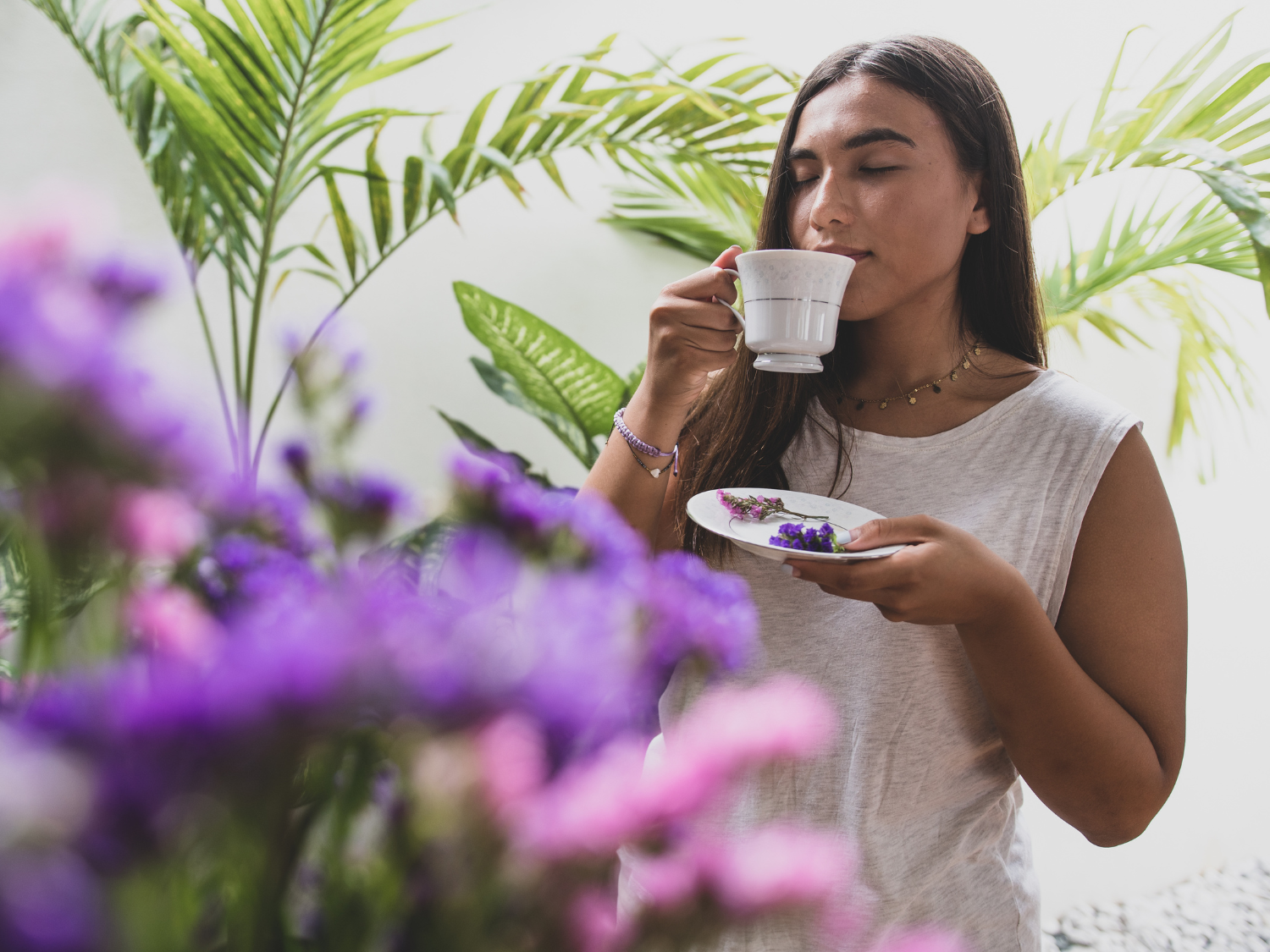
How to Choose Your First Tisane
Isn't it so amazing how these natural ingredients can aid us in feeling our best without the need for sweet sugary drinks?
You may be wondering which tisane is right for you. If this is your first time I recommend you start with something that's light and easy to drink, particularly cold so you can enjoy it slowly. There are three handpicked blends below.
1. Refresh Acai Berry Tisane
Beautiful light tea with an amazing aroma, enjoy hot or cold.
2. Lemongrass and Ginger Tisane
Soothing, good cold or hot. If you prefer a more mellow flavour add some honey to reduce the 'zing' of the ginger.
3. Spearmint Tisane
Cooling and refreshing, good cold or hot. Easy to drink. Lovely spearmint/peppermint aroma. Extremely satisfying on a hot day, make it up, put into a thermos with ice for a refreshing drink that makes you feel good and hydrated.
It is our mission at The Tea Cartel to help save one human at a time from unhealthy sugary drinks and sodas that are literally doing bad things to our body on the inside. We want to educate and help people learn about the benefits of what nature has provided to help you live a healthier life.
We hope you found this informative. Do you know someone who might enjoy this guide? Please send it to them!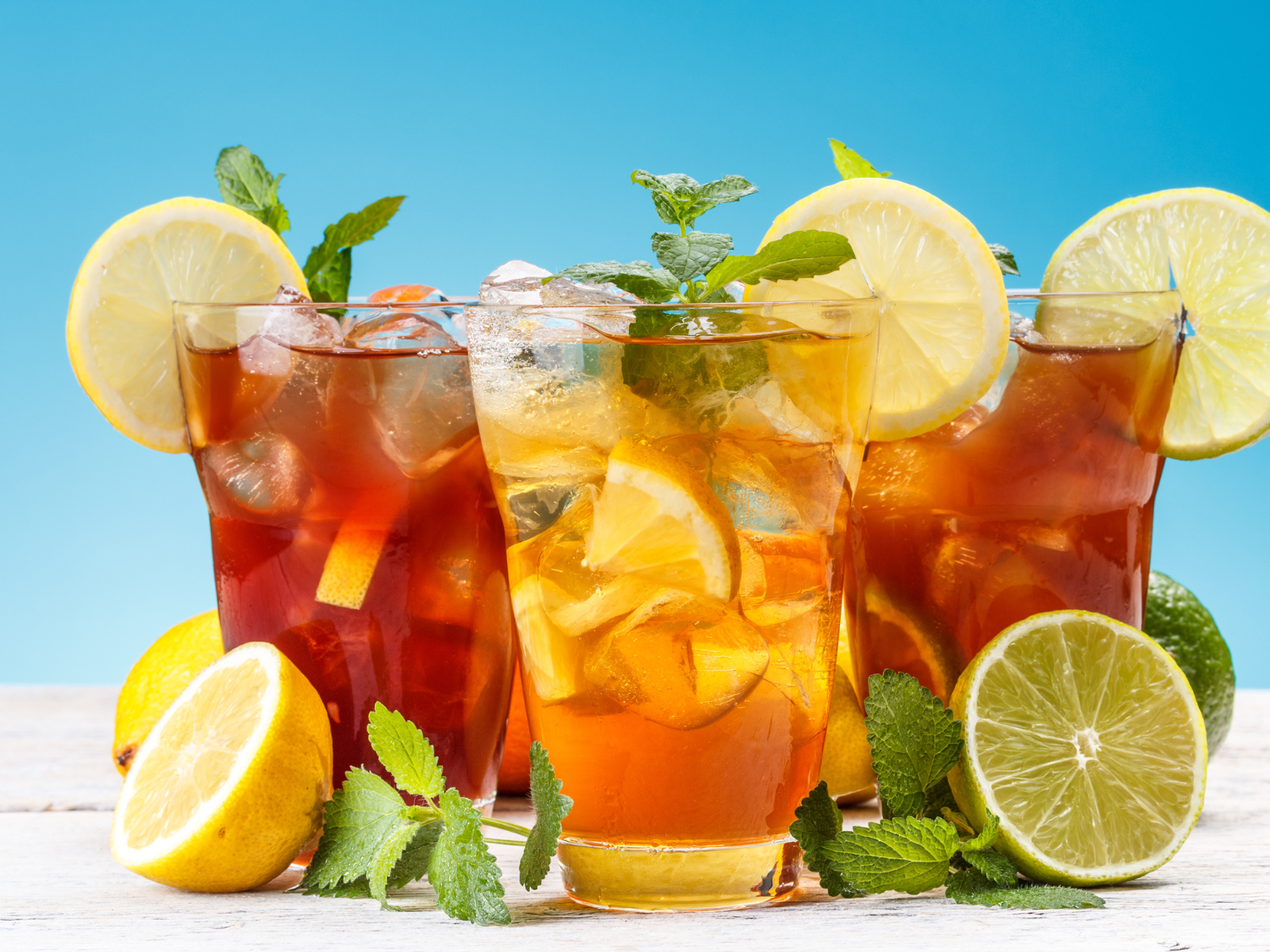


Leave a comment